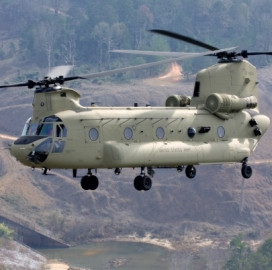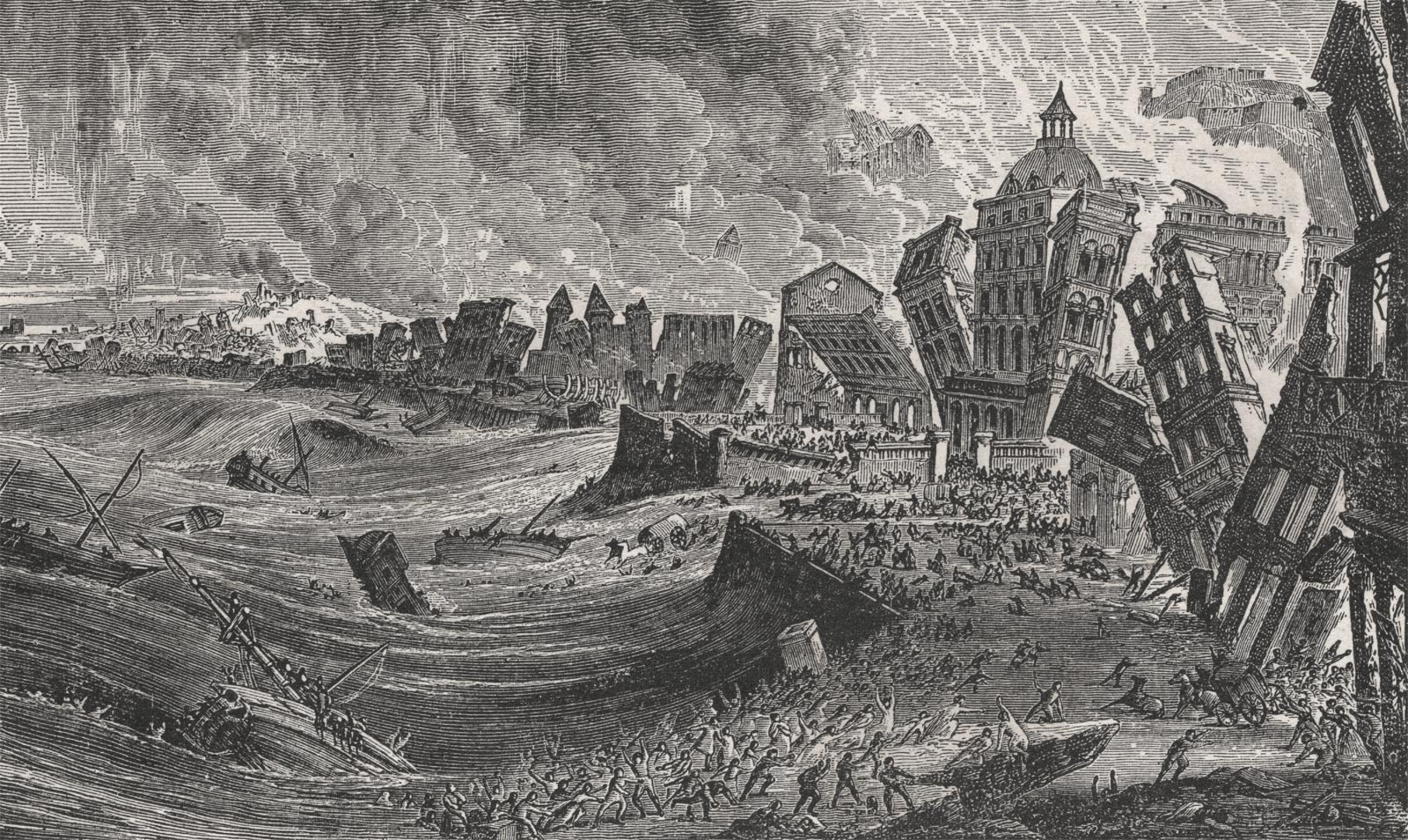Boeing is formally offering the latest Block II variant of its venerable CH-47F Chinook heavy-lift helicopter to Poland. The pitch was announced on 5 September at the MSPO defence show in Kielce, Poland. Boeing’s push in the former Warsaw Pact country comes after Poland finalised a deal for another Boeing product – AH-64E Apache attack helicopters – earlier this month. That $10 billion order covers 96 gunships to replace the Polish land forces’ current attack aviation platform: the outdated Soviet-era Mil Mi-24. Boeing is pitching its Chinook heavy-lift helicopter to Poland as a complement to the AH-64E attack helicopters Warsaw plans to acquire.
Boeing officials have previously told FlightGlobal they often pitch the heavy-lift CH-47F to Apache operators, citing the twin-rotor type’s speed and payload as ideal for providing logistics support to AH-46Es, including by transporting ammunition and fuel.
The latest Block II version of the long-serving CH-47 offers an extra 1,814kg (4,000lb) of payload and increased mission range over the existing model, achieved via an upgraded drivetrain, reinforced airframe and enhanced fuel system.
Boeing says the latest Chinook is also more reliable, having a new rotor system that requires less unscheduled maintenance. The US Army committed to acquiring the CH-47F Block II for its future heavy-lift fleet earlier this year, part of the service’s latest aviation strategy. The decision ended years of uncertainty about the future of Boeing’s Chinook assembly line in Philadelphia.
Boeing delivered the first example – a remanufactured Block I aircraft – to the army in July. The company has separately been delivering the MH-47G special-operations variant of the Block II Chinook to the US Special Operations Command – relying on those to sustain production. Germany also opted for the latest CH-47F Block II model – with Berlin approving an $8.5 billion deal for 60 aircraft in 2023.
The delivery of a remanufactured CH-47F Chinook in the latest Block II standard marks a milestone in the US Army’s strategy to modernise its aviation fleet. Following the US Army’s decision to modernise its fleet of heavy-lift rotorcraft with Boeing’s latest Block II Chinook, the company sees an opportunity to develop a secondary market for older Block I CH-47Fs, particularly among international operators.
The Chinook: A Force Multiplier for Poland
Boeing believes the Chinook would be a valuable asset for Poland, providing a range of capabilities that would enhance the country’s defence posture. The Chinook’s ability to transport large payloads and troops over long distances would make it ideal for supporting Polish forces in a variety of scenarios, including:
-
Logistics support: The Chinook could be used to transport equipment, supplies, and ammunition to Polish forces deployed in the field.
-
Troop transport: The Chinook could be used to rapidly deploy troops to key locations or to evacuate them from danger.
-
Search and rescue: The Chinook could be used for search and rescue operations in remote or disaster-stricken areas.
-
Humanitarian aid: The Chinook could be used to deliver aid to people affected by natural disasters or other crises.
The Chinook: A Complementary Asset to the Apache
Boeing has highlighted the Chinook’s potential to complement Poland’s newly acquired Apache attack helicopters, forming a powerful force multiplier. The Chinook’s ability to transport troops, equipment, and supplies would provide the Apaches with the logistical support they need to operate effectively.
“Operating the Chinook in tandem with the newly acquired Apaches will serve as a force multiplier for the Polish Armed Forces due to their complementary capabilities,” said Adam Hodges, Business Development for Vertical Lift Programs.
The Case for the Chinook
Boeing is making a strong case for the Chinook, highlighting its capabilities, its compatibility with the Apache, and its potential to benefit the Polish defence industry.
“The Chinook has been a key part of the European defense and humanitarian relief missions for more than five decades and would enhance Poland’s cooperation with allied forces, and support the country’s defense needs,” said Tim Flood, senior director, International Business Development for Europe and Americas.
“In addition, the Chinook would deliver additional benefits to Poland through job creation, economic growth and greater autonomy for the Polish defense industry.”
A Competitive Landscape
While Boeing is making a strong push for the Chinook, Poland is not expected to make a quick decision. The country is likely to consider other options, including the Lockheed Martin CH-53K King Stallion. The King Stallion is a newer and more advanced helicopter than the Chinook, but it is also more expensive.
Ultimately, Poland’s decision will likely be based on a combination of factors, including cost, capabilities, and the need to ensure interoperability with NATO allies. If a competition does occur, the battle for Poland’s heavy-lift helicopter contract could be a close one.
A Force Multiplier for the Future?
The Chinook has a long and distinguished history, and it remains a powerful and versatile aircraft.
The Chinook has a long and distinguished history, and it remains a powerful and versatile aircraft. If Poland chooses the Chinook, it would be acquiring a proven force multiplier that would enhance the country’s defence capabilities and interoperability with NATO allies. The decision could have a significant impact on the future of Poland’s military and its role in European security.

















